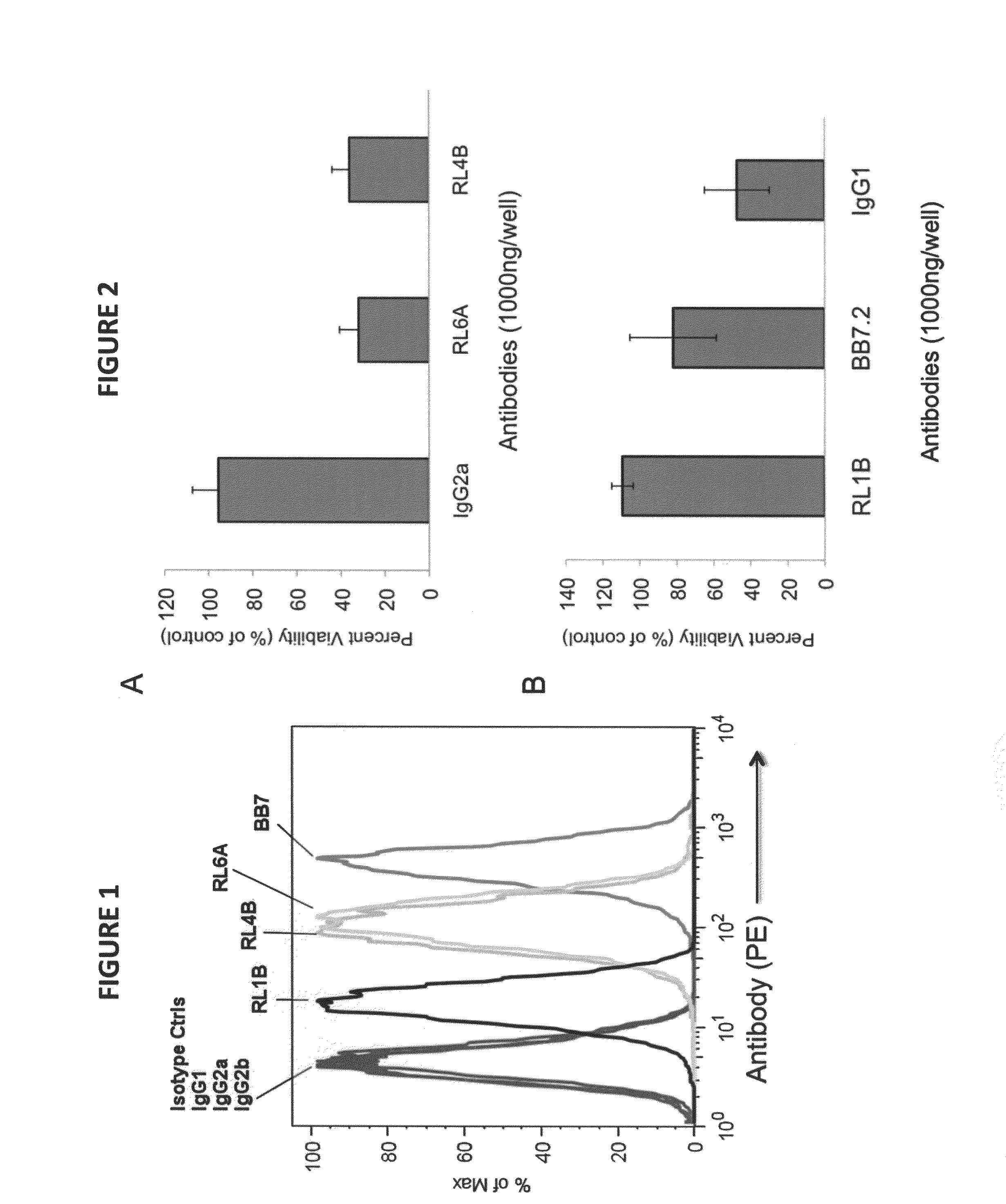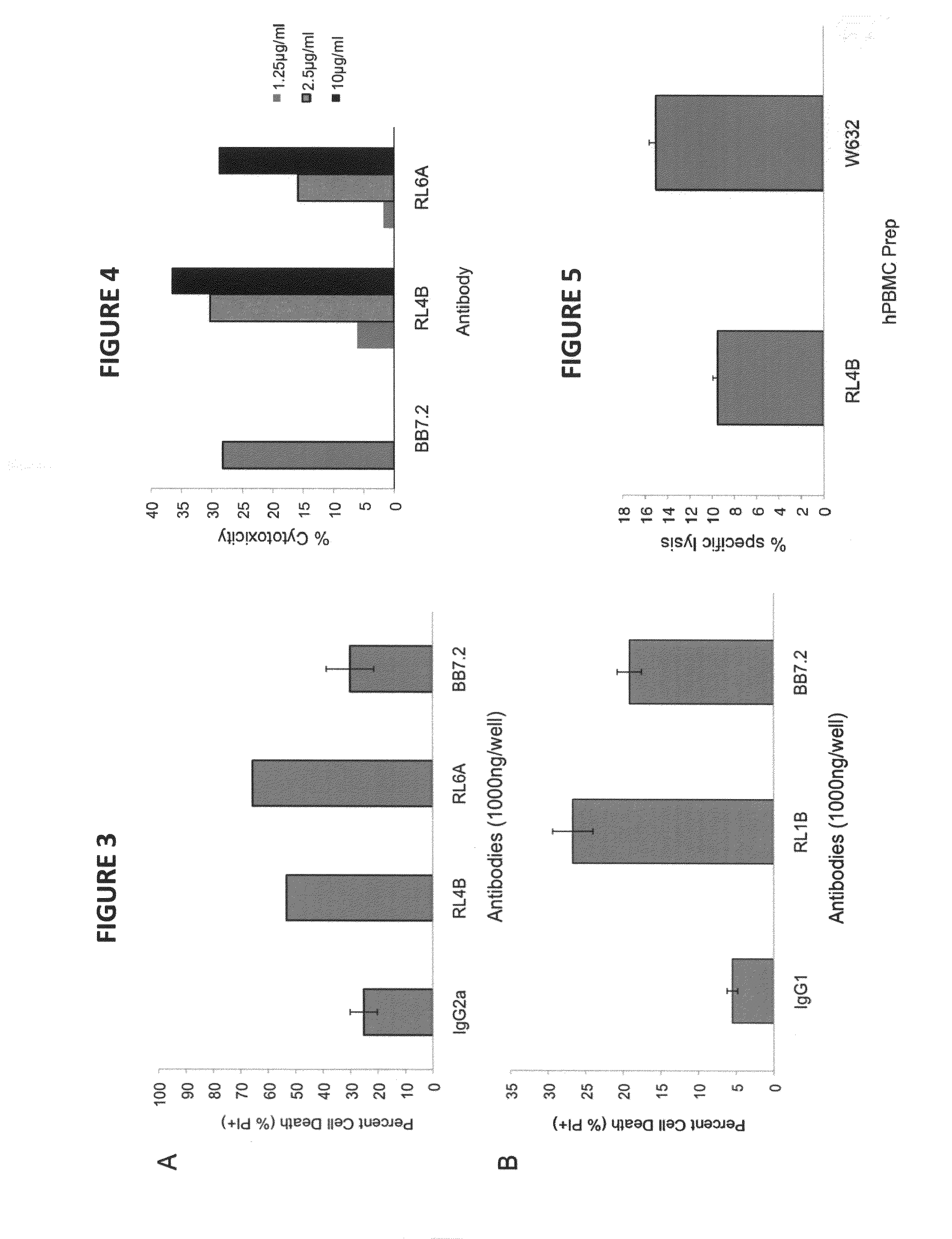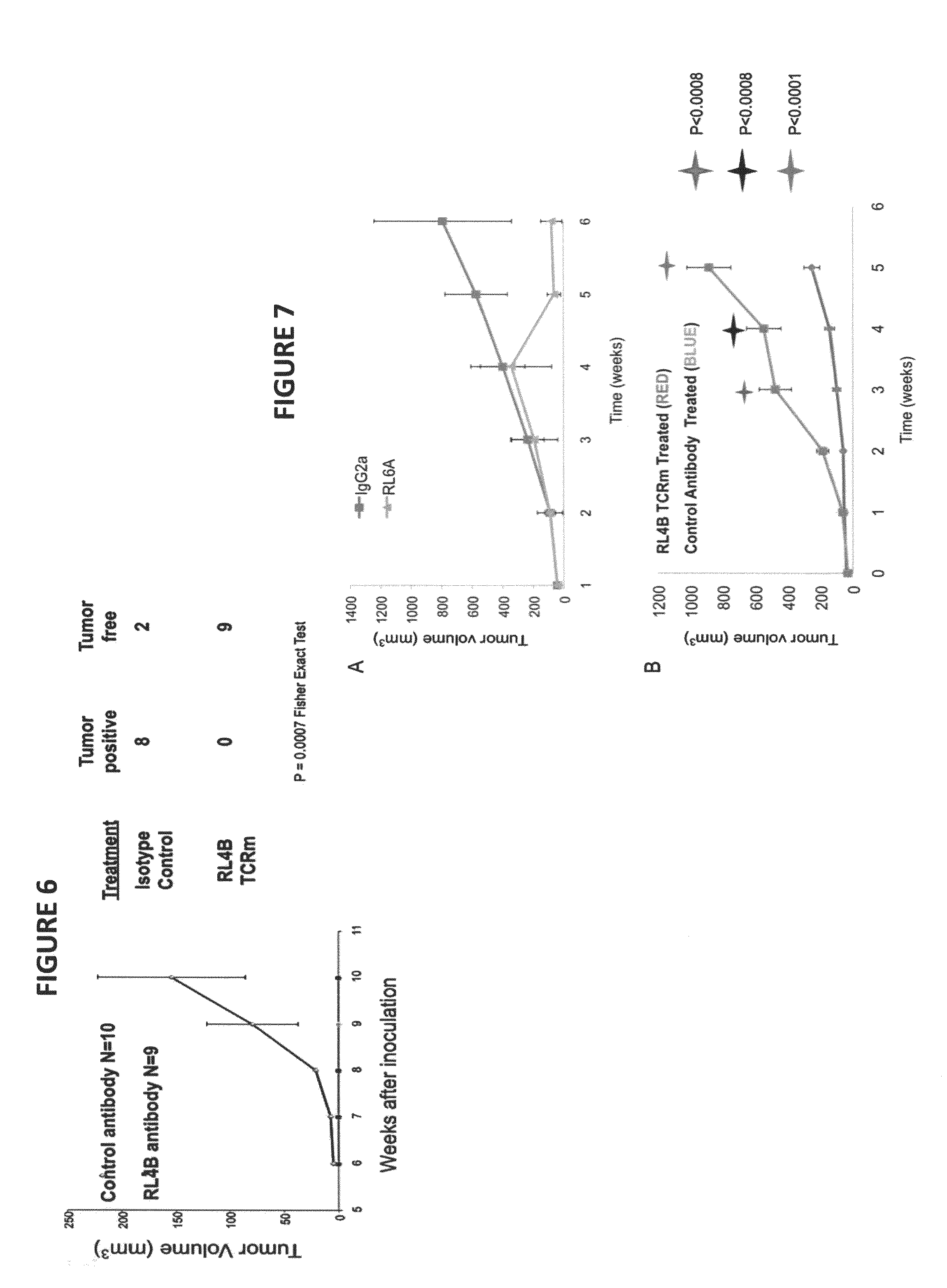Antibodies as T cell receptor mimics, methods of production and uses thereof
a technology of t cell receptor and antibody molecules, applied in the field of antibody as t cell receptor mimics, methods of production, can solve the problems of inability to describe how (or if), inability to accurately predict the effect of antibody molecules, and significant number of patients (up to 70%) refractory to treatment with these antibody molecules
- Summary
- Abstract
- Description
- Claims
- Application Information
AI Technical Summary
Problems solved by technology
Method used
Image
Examples
example 1
Materials and Methods for Example 1
[0155]Primary cells, cell lines and antibodies. The human tumor cell line MDA-MB-231(breast) was obtained from the American Type Culture Collection (ATCC). The murine IgG2a isotype control Abs was purchased from Sigma-Aldrich. Fresh blood buffy coats containing peripheral blood mononuclear cells were obtained from anonymous blood donations from Coffee Memorial Blood Bank (Amarillo, Tex.).
[0156]Antibodies and synthetic peptides. Polyclonal antibody goat anti-mouse IgG heavy chain-phycoerythrin (PE) was purchased from Caltag Laboratories (Burlingame, Calif.). Isotype control antibodies, mouse IgG1, IgG2a and IgG2b, were purchased from Southern Biotech (Birmingham, Ala.). The BB7.2 anti-HLA A2.1 mAb expressing mouse hybridoma cell line was purchased from the ATCC. Peptides, KIFGSLAFL (residues 369-377, designated as Her-2369; SEQ ID NO:5), RNA Helicase p68 YLLPAIVHI (residues 720-728, designated as p68; SEQ ID NO:10) and human chorionic gonadotropin-β...
example 2
Materials and Methods for Example 2
[0191]Viral-infected cell staining for flow cytometry. Purified TCRms RL15A or RL14C were used at concentrations ranging from 30-120 ng / ml to stain T2 cells pulsed with various concentrations of selected WNV peptides, selected flavivirus peptides, cancer-associated peptides, or irrelevant peptides, as indicated by the figures. Background staining was established using unpulsed T2 cells (UP T2) stained with either TCRm of interest (120 ng / ml or as indicated in figure) or with mouse IgG1 isotype control antibody (120 ng / ml or as indicated in figure). TCRm binding was detected using goat-anti-mouse IgG-PE conjugate (250-500 ng / ml), and the geometric mean fluorescent intensity (GMFI) was determined by flow cytometric analysis utilizing either a FACS Canto or FACS Scan (BD Biosciences). Data were analyzed by either FACS Diva or CellQuest software (BD Biosciences) and are representative of 3 independent experiments. For natural infections of WNV, HelaA2 ...
example 3
Materials and Methods for Example 3
[0200]Antibodies and synthetic peptides. The conjugated polyclonal antibodies goat anti-mouse-IgG (H+L chains)-horseradish peroxidase (HRP) and goat anti-mouse IgG heavy chain-phycoerythrin (PE) were purchased from Caltag Biosciences (Burlingame, Calif.). The mouse IgG1 isotype control antibody was purchased from Southern Biotech (Birmingham, Ala.). Peptides TMTRVLQGV [residues 40-48, human chorionic gonadotropin-β peptide designated as TMT(40); (SEQ ID NO:2)] and GVLPALPQV [residues 47-55, human chorionic gonadotropin-β peptide, designated as GVL(47); (SEQ ID NO:4)] were synthesized at the University of Oklahoma Health Sciences Center, Oklahoma City, Okla., using a solid-phase method and purified by HPLC to greater than 90%.
[0201]Cell lines. The human lymphoblastoid cell line T2 (HLA-A*0201) and the P3X-63Ag8.653 murine myeloma cell line used as a fusion partner were purchased from the American Type Culture Collection (ATCC, Manassas, Va.).
[0202]D...
PUM
| Property | Measurement | Unit |
|---|---|---|
| time | aaaaa | aaaaa |
| dissociation constant | aaaaa | aaaaa |
| dissociation constant | aaaaa | aaaaa |
Abstract
Description
Claims
Application Information
 Login to View More
Login to View More - R&D
- Intellectual Property
- Life Sciences
- Materials
- Tech Scout
- Unparalleled Data Quality
- Higher Quality Content
- 60% Fewer Hallucinations
Browse by: Latest US Patents, China's latest patents, Technical Efficacy Thesaurus, Application Domain, Technology Topic, Popular Technical Reports.
© 2025 PatSnap. All rights reserved.Legal|Privacy policy|Modern Slavery Act Transparency Statement|Sitemap|About US| Contact US: help@patsnap.com



